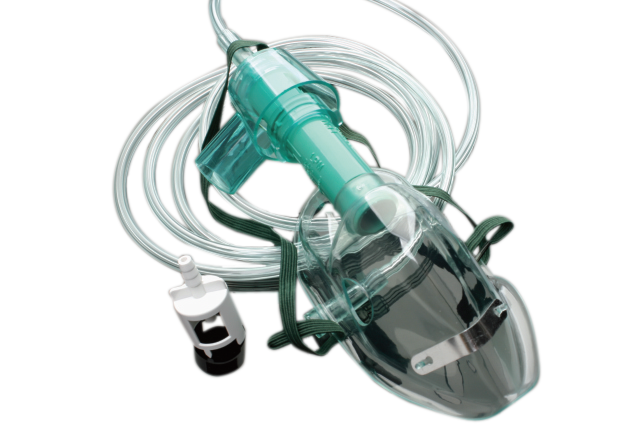
A type of disposable face mask used to deliver a controlled and accurate oxygen concentration level to a patient. A mask designed according to the Venturi principle, which allows for precise administration of specific amounts of oxygen. Often called a venti-mask.
| Ref. No.: | Size: | Color: | Qty. Cs: |
|---|---|---|---|
| NMR101603 | Adult Elongated (XL) | Green | 100 |
| NMR101601 | Adult (L) | Green | 100 |
| NMR101607 | Pediatric Elongated(M) | Green | 100 |
| NNMR101605 | Pediatric (S) | Green | 100 |
A Multi-Vent Mask is a device used by emergency medical technicians and other health professionals to help them breathe while they are working. The mask has a variety of different parts that work together to help the wearer inhale and exhale safely and efficiently.
A multi-vent mask is a type of respirator that helps distribute air evenly across the user's face. This device is typically worn over the mouth and nose and helps to protect against harmful particles and gases.
Multi-Vent Mask Venturi Mask is composed of a flexible, neoprene mask and a tube that is inserted into the mouth. The mask creates a vacuum by drawing air in and then releasing it through the mouth. This type of mask is very effective in removing smoke and fumes from the lungs.
Multi-vent masks are a great choice for people with allergies and asthma. They help keep your air clean and free of pollen, dust, and other allergens. Multi-vent masks also help prevent breathing in smoke, fumes, and other harmful gases.
Multi-vent masks come in two types: positive-pressure and negative-pressure. The former use an airflow to push air out of the mask, while the latter uses a vacuum to pull air in.
The main advantage of using a multi-vent mask is that it helps to keep your air clean. Pollen, dust, and other allergens can be trapped inside the mask and then expelled into the atmosphere. Multi-vent masks also help prevent breathing in smoke, fumes, and other harmful gases.
Another advantage of using a multi-vent mask is that it can help to relieve symptoms of asthma or allergies. By avoiding exposure to allergens, you can reduce the severity of your symptoms. Multi-vent masks are also easy to use – all you have to do is put them on over your nose and mouth.
A Multi-Vent Mask (MVM) is a device that helps to distribute oxygen and carbon dioxide evenly throughout a room. However, there are some disadvantages of using an MVM. One of the main disadvantages is that they can be difficult to use. Additionally, they can cause breathing problems if they are not properly fitted.
A multi-vent mask is a medical device that helps to protect your airway by reducing the amount of air that can enter your lungs. Multi-vent masks are used in a variety of situations, including during surgery, during intensive care, and during emergencies. Here are some of the most common uses for a multi-vent mask:
During surgery: A multi-vent mask can help to protect your airway while you have surgery.
During intensive care: A multi-vent mask can help to protect your airway while you are in intensive care.
During emergencies: A multi-vent mask can help to protect your airway when an emergency arises.